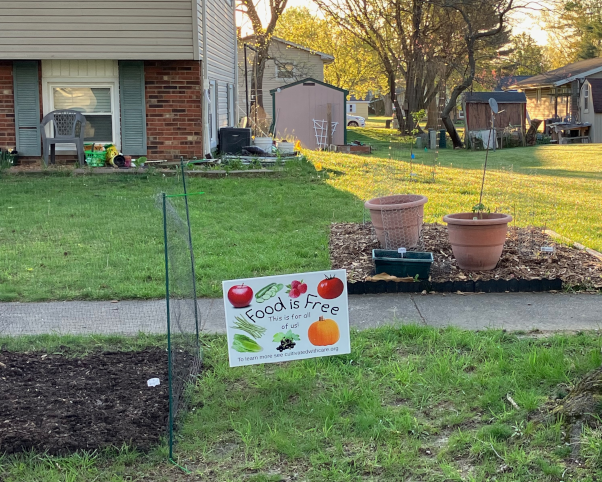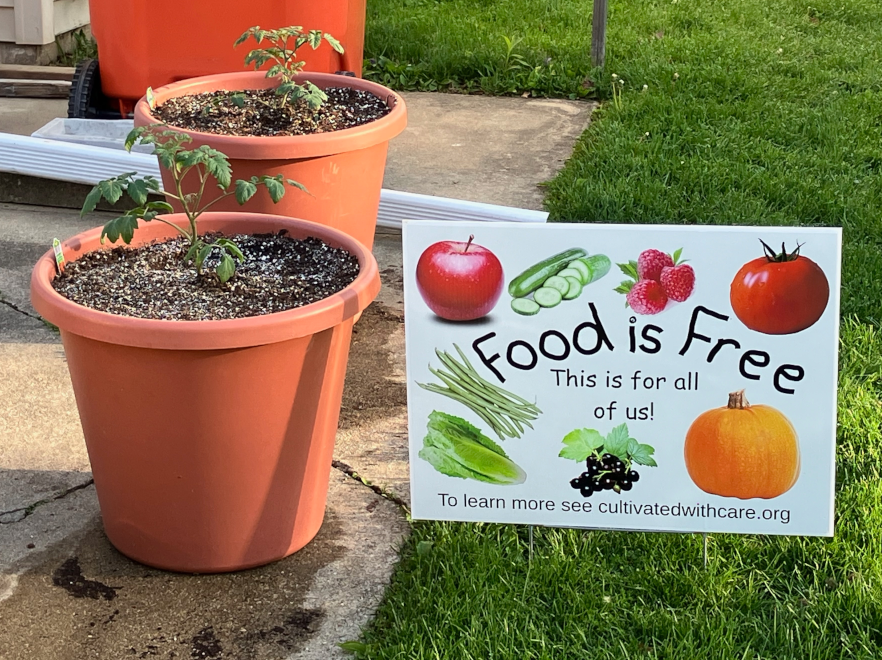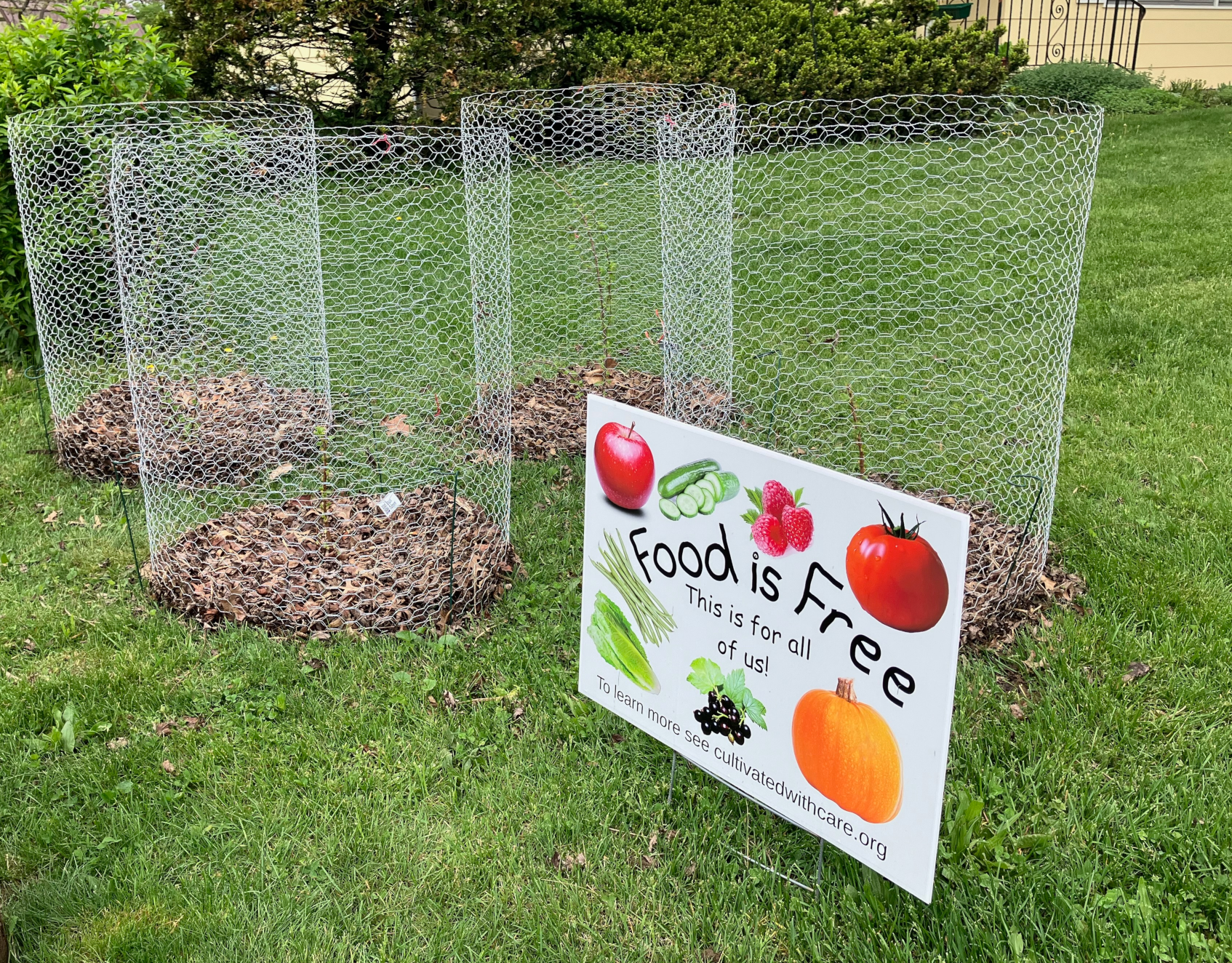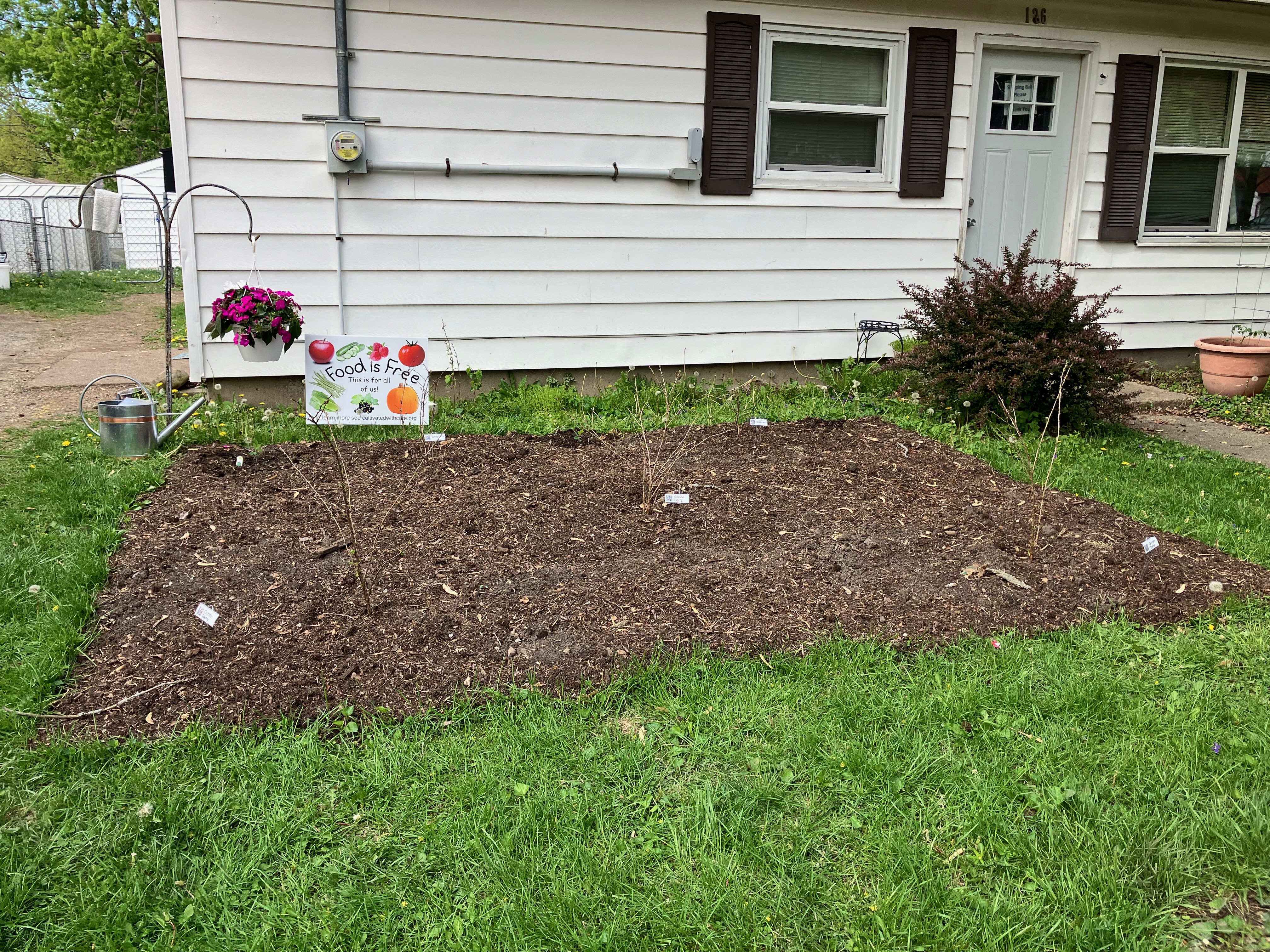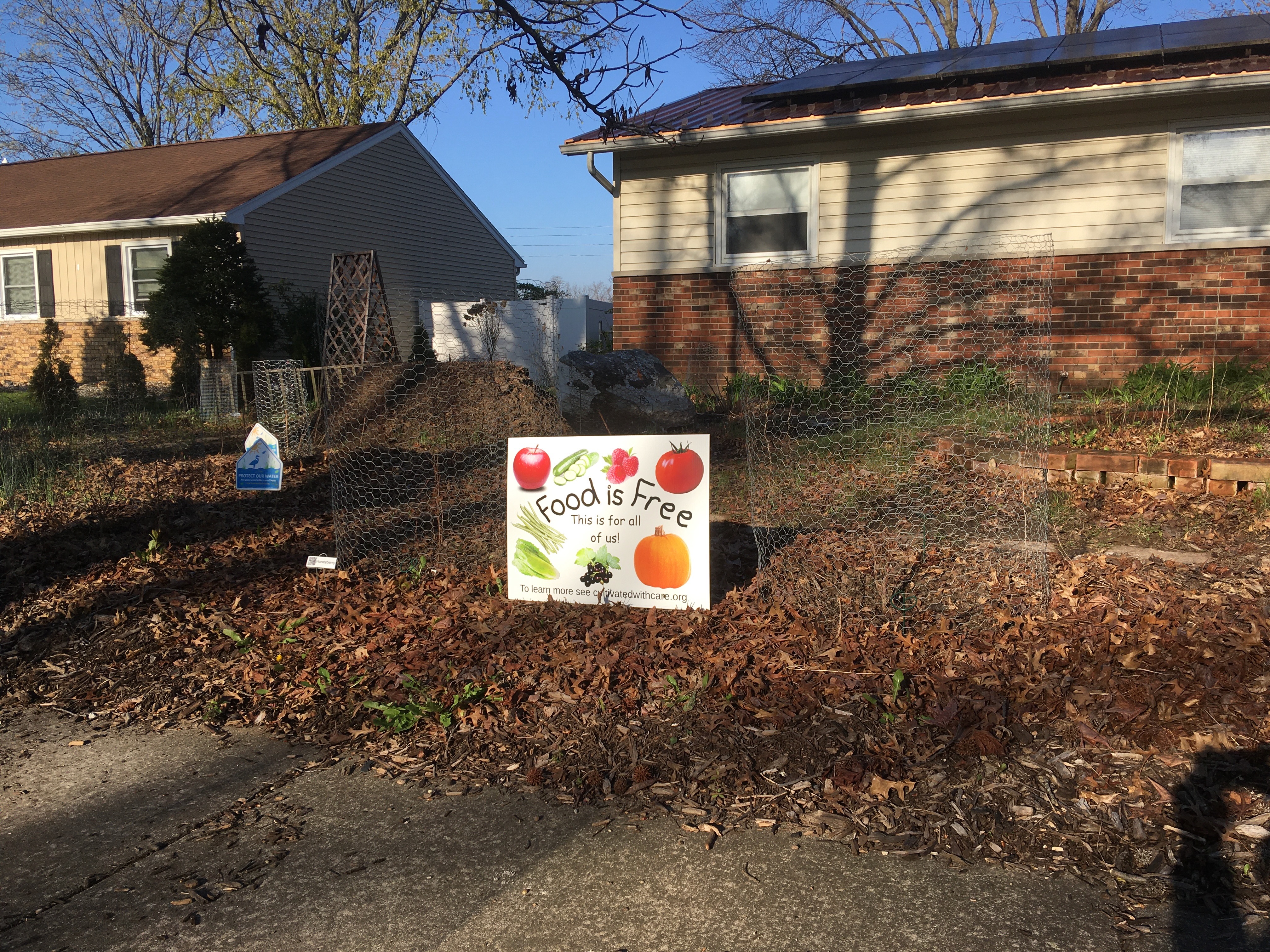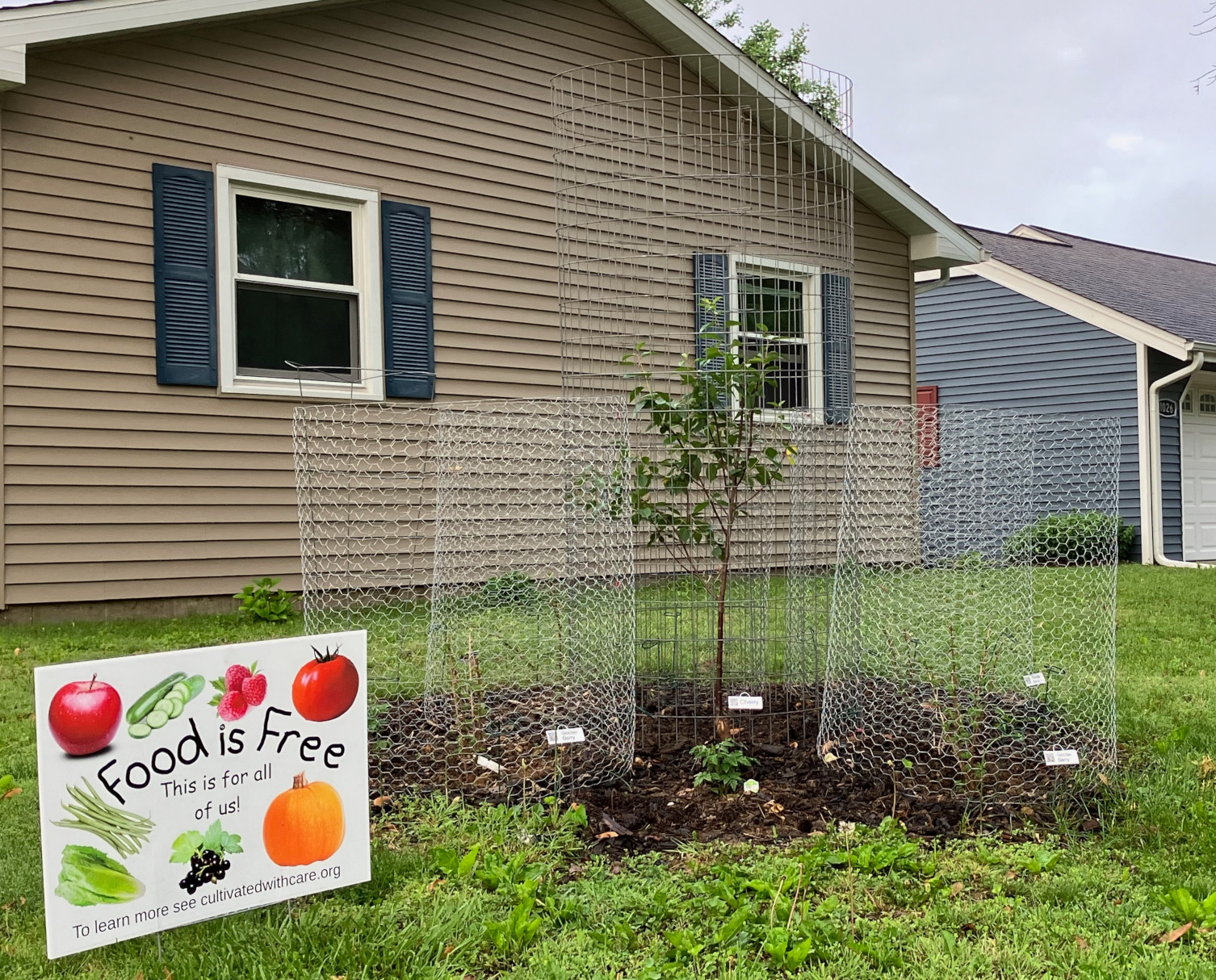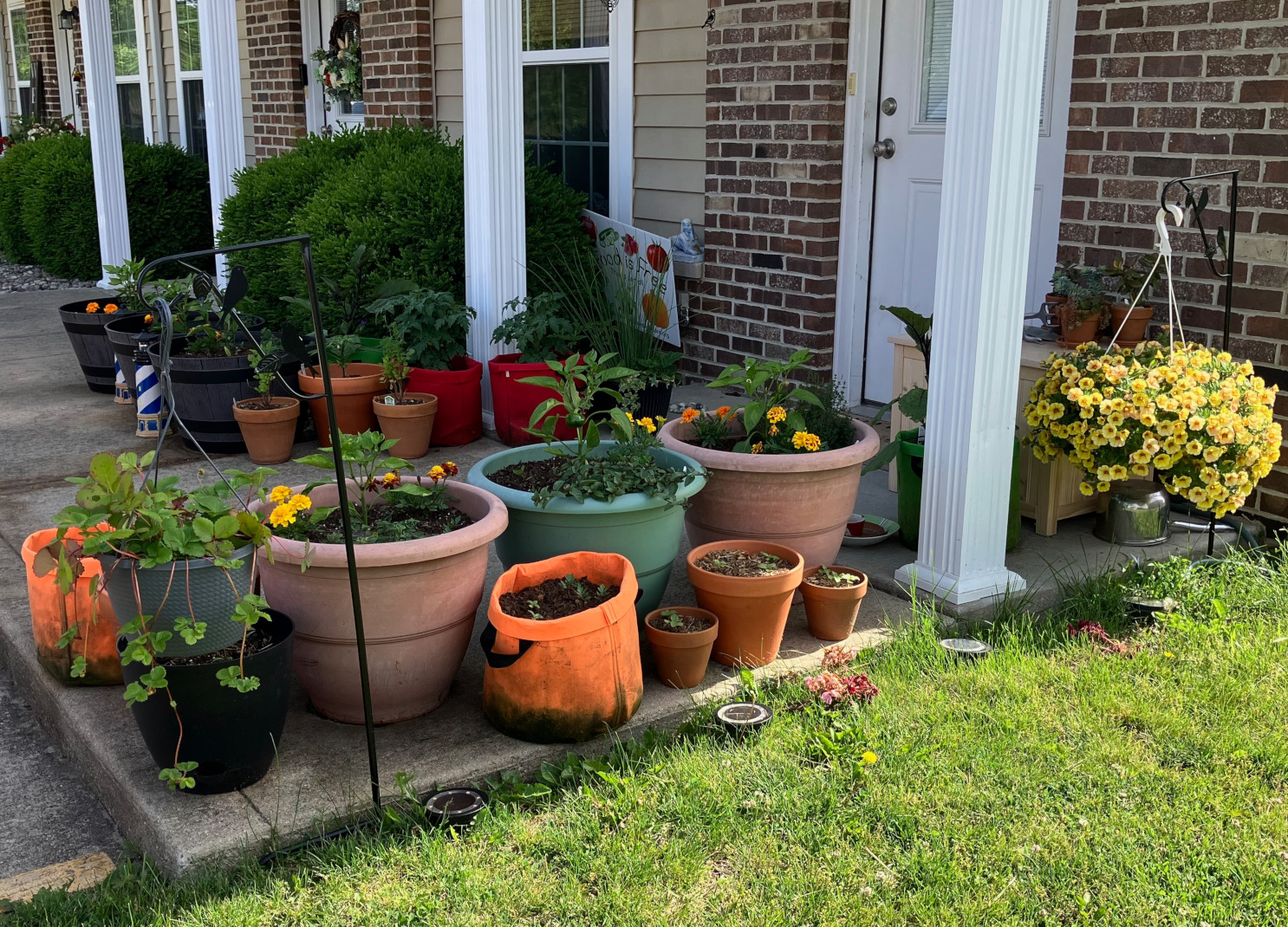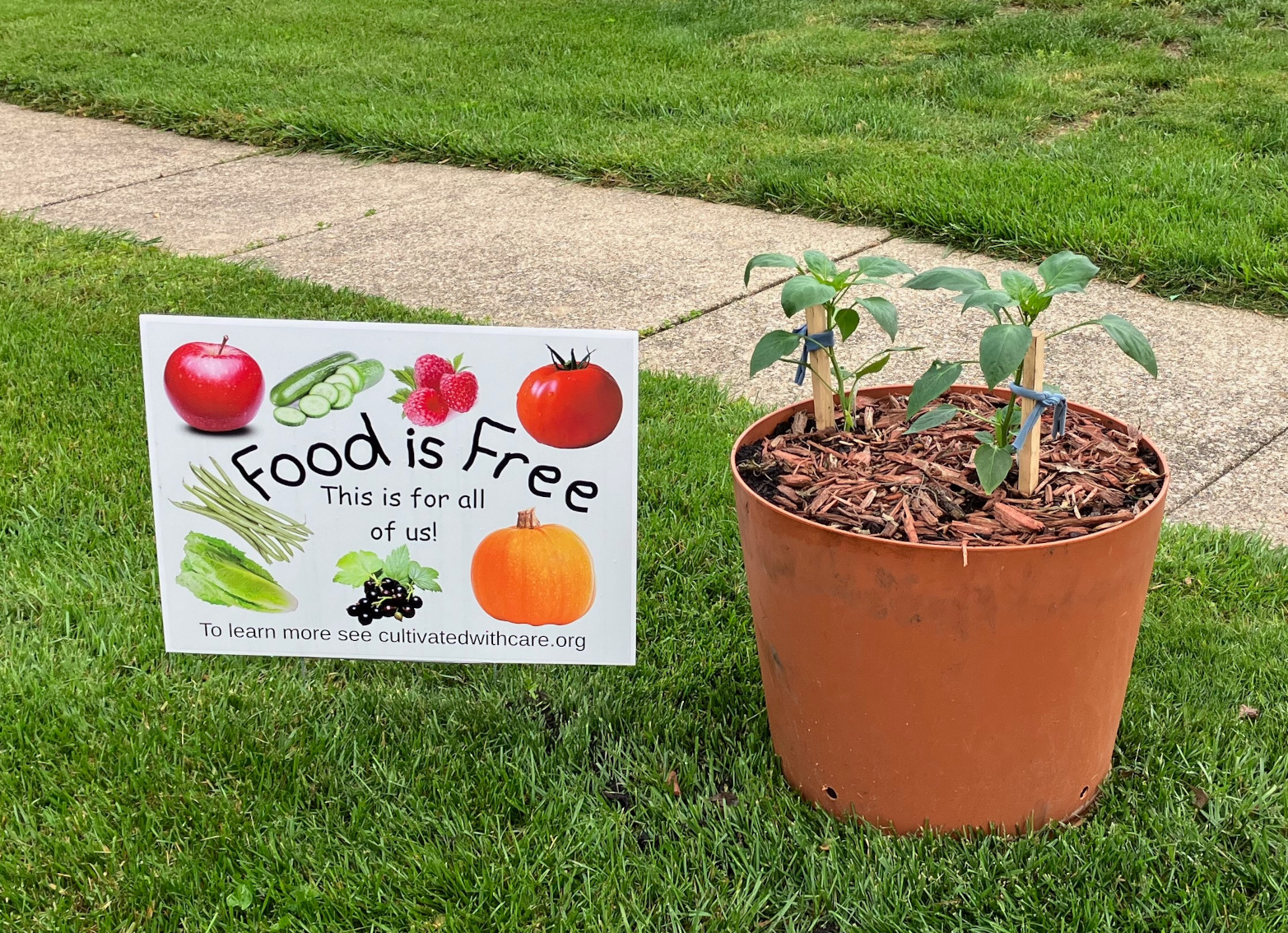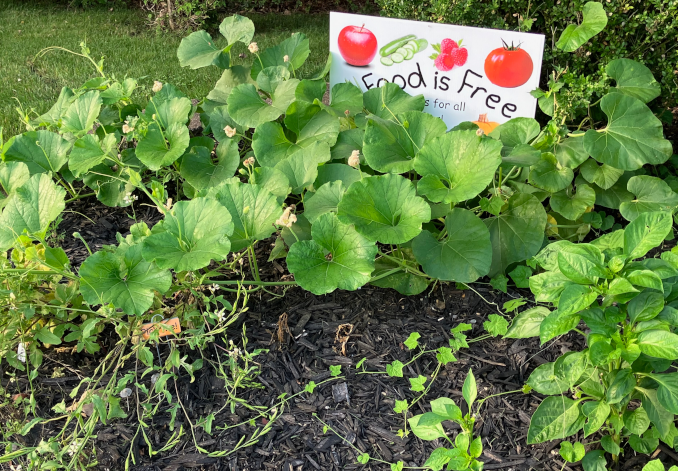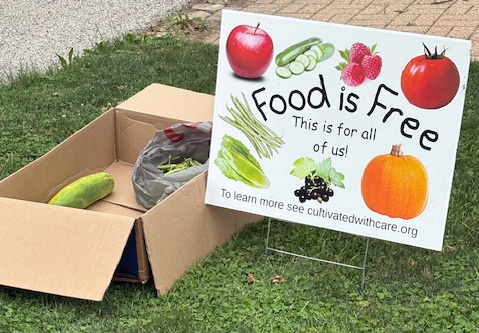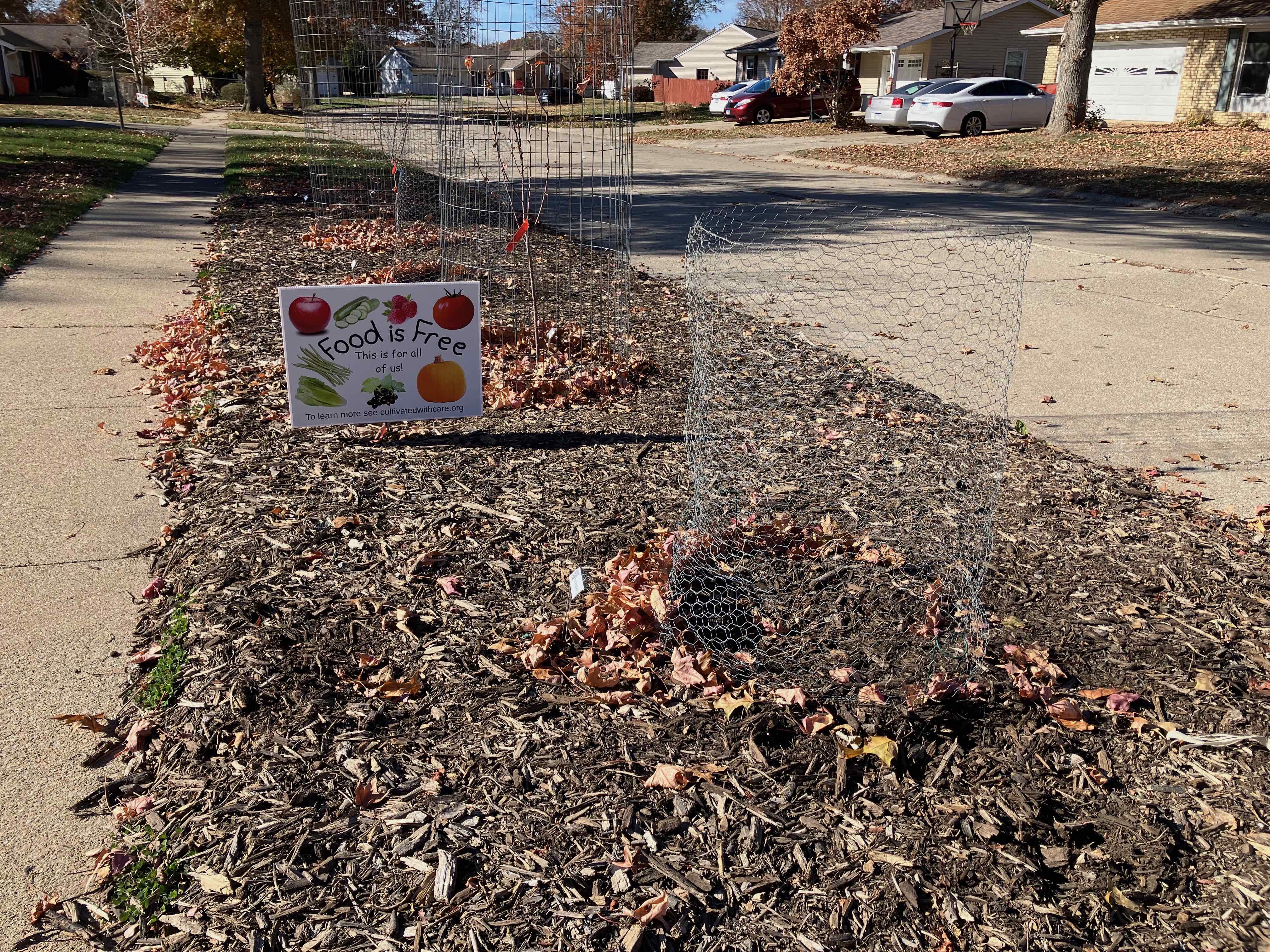

Start a Food is Free Project in your yard. This international project was started in Austin, TX in 2014. The idea is to grow food in your front yard to be shared with everyone. This video gives a simple explanation of how it works - https://www.youtube.com/watch?v=KlC-4MgfICU. Signs let neighbors and passersby know that everyone is encouraged to take some fresh food.
If you live near Coles County, Illinois, Cultivated with Care will buy plants to get you started and provide you with signs. To get started, use the Contact Us tab above to let us know that you are interested.
Food is something that we can use to connect with people, develop community, and demonstrate the human value of sharing. We all need food and with the continuing climate changes and possible disruptions to the food supply chain should many of our farm workers be deported, we would be wise to have local sources of food. Our example will encourage others to start their own Food is Free gardens for sharing.
People with expertise in gardening can help advise those of us who haven’t gardened much. Not everyone will have a suitable yard for growing food, but we can help others start their projects. Food can be grown in a raised bed or on the ground. We can grow annual crops like tomatoes, lettuce, or squash or permaculture crops like fruit trees and bushes or salad greens like French sorrel.
Cultivated with Care, the non-profit that takes care of the Charleston Food Forest, can help by
Cultivated with Care would like to function as a clearinghouse of information to facilitate the Food is Free project. If you have supplies like cardboard, fencing, tools, seeds, let us know and we can keep a list of who has what. If you want to help someone else get started, we can add you to a list of volunteers. If you need cardboard, seeds, help getting started, contact us and we'll see if someone has what you need or put out the word that you need something.
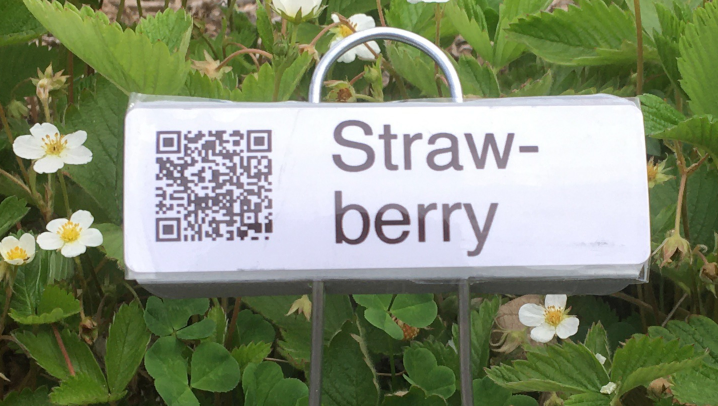
Besides the obvious benefit of producing food, growing a variety of plants develops good habitat and will increase the numbers of birds, bees, butterflies and other beneficial insects. Adding annual and perennial flowers attracts pollinators and adds beauty to our yards. A grass lawn by comparison is a habitat desert.
Growing a variety of plants develops and improves the soil.
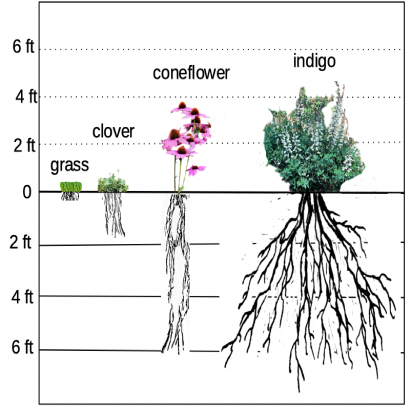
The photos on this page show quite a few examples of Food is Free projects that have been started in Coles county Illinois.
